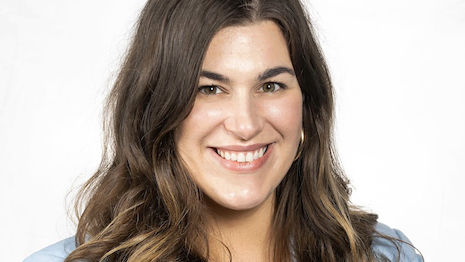By Catherine Dummitt
Let us start off with the good news: Luxury marketing is set up for a strong 2022.
Despite a prolonged pandemic, the sector’s revenues have already rebounded, and luxury goods sales are forecasted to jump as much as 25 percent this year compared to 2019, even as the non-luxury fashion industry sees only a 5 percent increase.
But as we have learned in the last two years, change is always right around the corner, and 2022 will be no different. Here are three luxury predictions to help marketers get the most out of the prosperous months ahead.
Returns policies will be refined
We have all been there: An online order comes to your door, but the item does not fit, is not quite the color or shade you expected, or you change your mind about needing it in the first place. So, you send it back – just like countless other consumers do daily, especially this month.
During the 2021 holidays season – Thanksgiving through January – online returns are projected to account for a whopping $120 billion-worth of goods. This cost is unsustainable for retailers, luxury or otherwise, and so is the wear and tear on the supply chain and environment.
Thankfully, innovative returns policies are being developed that meet the needs of customers, retailers and other stakeholders.
For some brands, it is all about promoting preferred behaviors to cut down on costs.
For instance, Saks Fifth Avenue offers free returns for two weeks. Beyond that, there is a $9.95 shipping charge.
Lulus offers a similar program: customers have 10 days to return. The cost is $7 after that.
These return windows and price points are fair to the customer and encourage shoppers to send items back faster.
The advantage to tighter return windows is that the product can be put back in inventory faster, which is critical during the supply chain crisis. And the product is more likely to come back in season to be resold at full price.
For the customer, it is akin to the happy hour specials: retailers reward them for taking action early and make them feel good about being decisive and meeting the deadline.
Also, brands are starting to offer VIP returns policies that reward loyal customers with better returns choices, while limiting options for more expensive customers, such as serial bracketers.
DSW, for example, extends free online return windows for its VIP Gold (90 days) and VIP Gold Elite (365 days) customers. Other DSW customers must pay $8.50 for returns.
This tiered strategy encourages VIPs to be loyal – who does not like being a VIP? – and helps the brand keep the cost of returns down compared to a free-returns-for-all policy.
Such personalized returns policies will become more popular in 2022 among luxury retailers because they tap into this sector’s aspirational consumer mindset and make for better economics and more sustainable practices.
Shoppable TikTok campaigns get bigger investment
The thing about in-store shopping that most of us enjoy is interacting with the products and store reps because it is an experience rather than just scrolling up and down a computer screen or phone.
In recent months, livestream shopping has helped ecommerce-minded brands bridge that interactivity gap.
For instance, Bloomingdale’s last year partnered with shoe designer Jimmy Choo to connect with many of the retailer’s customers via Zoom.
To test products such as lip balm and skin cream, Clinique and L’Oreal have leaned into virtual shoppable events, encouraging customers to buy the products online, on the spot.
At the same time, this trend is increasingly taking place on TikTok, which has more than 1 billion global users.
American Eagle, for instance, recently collaborated with influencers Addison Rae, Madison Bailey and Chase Stokes on a shoppable TikTok stream, where the average tune-in time was an impressive 11 minutes.
In 2022, look for luxury brands and other retailers to increasingly invest in shoppable livestreaming on TikTok.
One might ask: “Why TikTok instead of YouTube?” While YouTube was founded as an on-demand, one-to-many broadcast platform, TikTok was purpose built for live, two-way engagement, which is more conducive to commerce.
These stats help further explain: U.S. consumers now spend more time on TikTok than YouTube, while the hashtag, #TikTokMadeMeBuyIt, has been viewed more than 7 billion times.
Packaging will be the new storefront
With so many channels such as TikTok competing for everyone’s attention, it is an absolute must for marketers to create a memorable experience for their customers.
Luxury brands need to be there for every step in the journey, from pixel to package, as global ecommerce is expected to reach $1.2 trillion in 2022.
Currently, ecommerce players in the United States are spending $49 billion on packaging but not using the medium to its fullest potential.
This year, packaging will be the new storefront, helping luxury brands provide unforgettable, eco-friendly and convenient experiences.
Everlane has long been a leader in the post-purchase experience. The brand is including personalized notes while taking measures to eliminate plastic from its logistics.
Across generations, we love print when it is done with style, especially millennials.
So, packaging should fit into luxury brands’ aspirational mindset the same way that catalogs do.
Operationally, packaging is usually a line item next to shipping costs and return rates. But Everlane shows that it should be thought of as a marketing and customer experience (CX) opportunity as ecommerce becomes increasingly important and brands constantly drop into consumers’ homes via delivery packages.
WE HAVE AN exciting year ahead, particularly if luxury brands keep evolving with their ecommerce returns, interactive marketing and post-purchase CX.
These ideas gained steam throughout last year and will prove to be strategically important for retailers to win the day in 2022.
Catherine Dummitt is vice president of marketing at Narvar, San Francisco. Reach her at catherine.dummitt@narvar.com.
{"ct":"yUGUIigEpUTgaBasexP6nJezQfhswbFyAbJ\/CartMvj\/N8WasQgtByLzhLKCcTBQPsi4YVVksryuHzHeIdoY2sr6R3QW72L19c\/UI\/U+4hfq55eSoatjt\/nPVuDh5ciVgnbIVa1kQszhPEoxXeYL4awnxdylXuegwFGWguv2zAzTtELTPzzP6xrccA2yc0G3+49+p5omX+dIBgoByOBUrW4PnNmQ8akDaQM+0\/NatkfRSTjWx+6lJ3Xd+\/R4phbVlzDcr3J\/DpUKC307evyMnJ23cfiiNXYKwFJObIqlCF6ejIrzmZHpFk85AD0hh\/EMfzs4tAXgrG8zqo2NPU4V6lbf1glo1aIHTeWz5qUzWc2\/Ovy4sF7KNeiVgZdehW8TavNUrDkVu1Mgoc\/alxqi+XhmWfg+LD6skxrYHbzy3Waai\/e5kjLiGp\/hATFwv8PsU6wn1bpAAqPX7RxOhiu\/T2feD\/L+DkoksK7hh5v2HsOKCCyUMvkZcBYYmXf+5Am18+L+9VapQf4P\/qUc3JDi697lyHYn7sDZvcG8PhLV++g0hMmj\/o\/1HVlzbyaSUl5UfuFh2J2RabCsntga1kBViP\/UXHCtWSlqbNPfqFIFiJ6jVrJOz3pJqCDVhqms+BXUJs1WkV1LDMGlB+EA\/RkFLekTodE+FrqjubhBg7LVGcw1NG2NoVLh8CajsXvyREHJbk7C8i\/P9YL8iDC70CeYEDzFrFMHwxgpbUh3YDqSoRjLQAFfzBxYloKomPCCNG3EEqIpQsTZcePBq2yuP1m\/ApytzK79Orr257G6Mlx4u5sVJBy+lLnXRcVh9udAKOK8qopUm7ZqTexJV9UXRSDKoY9ZZY1PYLkwkgyEW9QP4ltT5RGO4BgV0gV8+Ly32hYYUja4FqAG7\/gMBPFUpVFzGFLL+3aWPKL99HoJT\/+3PBY2fDBg7AEJDmztS7OsOh0ggjvjpUBm14idNWob7fwnYii5MIRVYl9mNEAqoU2E0+ZyJK+oGfCZ8WwHBCagvqdO5SxJLTwe4ygRKA58MtKoSeijUQx87w5tZGGtQ+wq5K3hNBJ1PwGmCjCFLy\/MAJBmiQf2tFQCu7jiv5KqpdIOFUcLHjVpNYMecPxOEysiI9GuX95BURoOa8yeb7xOAQZFiVK7DKpgAP+yQ2QjKdPAnc8fKlFMVB3LsrkndLku58QF416LB9k+wC2Tu6WTnV12gBRyzY7ulzK1QFGhBQ2N2wAuqiaHj3fUmD1zAEqiI5828XfKn2sYsDAW1NF6hCAUWozWmlM\/a8+8mkUYMr0lo1Ih4s5mko6bgVQL\/6ooy\/x7xgTHTUOx5VZhjfeGfzLHo84iXcTzSCyfqI0OCu9FgOQ4qTOdnTSZj\/Snix+3rdF4tO2MvCTPrtxyEhBGPBiUph26H\/nH9C16WHI0\/gBh7+8l4WMT9F9i636t51unbvKRiPwID5xXtdfGIc5njKvU3nbEDTzsJCyBRlMB7i1fzn1EKNIKPsBtL\/NgPjx3pHzgz39LFPnA25VnorKsQn8M+ON4Mm7QuqaLDVVOnVkC4tBvj95EGkuFcFXVf4DVa++jdkD3zXinCPCxTWK6YIZZpexzhpu3zPN1zVqpKndbgUejRST3vLdMp298ToXY6KGtpZkdOLDAMS6Ki4WJIevE9lx7iRCs6W2O4HTFulpjiRi80I48iciuClyGQDCwFRrPtBip1G+4Y8KU34uMY6uCftidx+ndQM7e+7+i9dnVEmrfAo1fVewXGYt0yeIecocvT8wjI0w7BIa+NqhskeRoA4z79ONIHSz89OvhKkh0f7aiZSL8Xt0b9FtiB61EWx\/+57EwH2JzL0EeT46L1bn+\/SCchRKHj1ihs9ebxqFxIKTqvrAQ7NBFeD6EPjEtswrMCYbYo3u1ikJAOva6Rsg+rgD9+YzyjcDhp8hd7E3xsJb4h7+DA9SBv5byL6ql5QD6WLe9AoA2KrJtjCQIxq9VK26cemCL9sqyhin9xAnscCXA9pYGAH7PNh\/I\/eHAiRMaoZXAA0aLPC3KEB49zr1L1Ml8teLXhc62yc6eDAIbKyCx5Q2IX+e3Ph4vLvPtVUQwpxF\/lBoTw\/C9pTSq2kW5iozxrI4VxE71VtCxfXf7UjKt4rDc0FqGIZIho4n\/LPH1ZEhZOjfTQnb2MPelwb\/fzDwBTmdGSPboSUxldFUDP74rZKeAe1pUSfwRqlBIi8IMQUv5bqtSARghmeCqxOplq4bgar7joGaCfoGj+g88i7s4YFIVlRE+Cw\/AEDv3+RyVEgev\/ZVVc369IjES+3s9zI2qcqSuDugs3afIVnhup5lNFv0KzHshIKNS5ttBZ1w+L7XWvVLyDLsRm7zZMTdcA2I38HGbmibGUvUBOHziV+RTdL0zRTrhTSJAs0FBBCQReOJdaPBQh7bSwN4osez0kypJw5bDBPfdHGgM7chKkB\/uat+kVUACUZAlUUkl0HsZGcqw947LMPu1qRpTlZQYBc7PkS+IogXXRy0NVo1ZchKPsmmldfW1wKoOTQjbsOJ8y0rBYsCEU8c0zzQCwm8p+vBIT1cRDknbXxSFSWzD7SdIYANpbfdfZeI4\/kgt3Myu+Gawc2rD67nERv+ySM0EHHVAfox\/LwXhwFIqXMt5lIZCCB2gP57EjeNkWzU+cZqRymIRec5lUHSP+Seyw8k2rxI26rs1OvBqZ+cIfdojhmkBqQmYUuC3llO8FkQcxMRXkF0DjIoQF98dWCwQrROxFR4BYQd\/Vxaamr\/s60bdzsxz1WlnUluTrvwtAVvaKL0XK89HbywDutjPyviwEEB1mN7suu\/KnRySPdDrHI9DAS+lfSTOkiJceWGcrvZyOidASnOsNbfknTubroVb3bJRlqhDY7iF+dyOh3RxOn2bjFb533RrPoRWbdw\/BQCWJRaiHRfgeFVEGPVlfblP1iQ\/UIfR73BdT0+eFm3V1EBxSjstDvp3o85qO5hTw5VVCQ2E7A\/TczawUBFR2b6ds\/YRt+dcUlCARLNDElsaPh1vEi3EGlmZtL2cWG1RF++TCUCWk\/aSB+e16ddPI0yeO3aWPyRVyZ1ACZp\/j+zalbky7zZzq\/kMoh4sgpT\/3qSlmUwmQdnnGO16Jxug3lFbMbb\/A1+Gcfg9Y9Ah4lbmUcGGQwm\/5LHDK55ilnwzXpPe4WAatIeFlYm9xyd64O8AXolxmxXsqDmyy9qOcDPgpg42\/OivVy4WVd3etPjxxG9RT7viMkqnEI0elwvo9pKI9uZ1XlQRODGJ8KLhyO+HQEgY9xKPoTWCloq1vT02pq939LKmFvdQFqHFp+HM4DFysi6MeVC2ZiTH77r\/g5oF00tdGlHiKXxfXuIhwqf8Q9RlTlT6NLpRnN\/8bGN95\/0k0zjX+zQLfjundFM50OKp2DGPILpfZrW\/L8997ff65q3RLqVM8gIGE8hZWhPTqW7WCbZu\/o3i4+ZYO1L7N5Uq4TAl8RWuC3uyDgMrcj9IShtQrjfZEPqhCWkqRmymn97cFTpTG\/3CzTVTvg9Q1NrWmdb6CZmdq6nnWj4eF5aoLzReV1xYTUxEbAdlJTOrzntnEqun0NWQbd8yUMA03oLGKtGgAT1HcsvK+E9wdmeHCb749VjjCUQqx8HEnLfJm47UOqJjFJWnDiL05z6nRtGr+v4XsCRS8sQu6dKySfr1JfuYr+mTw5L\/kpyE2mYdz5SBnt8mZ2GDSsGEVwlTBD+k7nzdpgo+3Bku3u+gRqVFDYxRgv+dmdhAx\/kDljIhazTCgwWMBfk1Yu7oaXKwX+mCVU18mVjZpyXDcJgoNATC547DZ87QSexLzIiJUi5tSNF4V7g2dU\/gtwr4pO6YndGeZsX0cFeza3kVBH6P9MkfWfB1POGui\/gTEJwQd9mNOkNAjH2WvGBx\/vbanSzH3bnPP47qwHlqe08Z2AiwAblO\/zNL+NY9hgcuuqSHbLEecp3vE7AWOeFGjWt5wCZ5d4KX+RQs6qoGMCtnK8n+BDDa+sgC5fbRHu5HQHcbay+SSv8pVT7Dph2c8pUyLABENjaPmQTtQdcTb1BwXcLuhl\/8Uu5BXNcgyMhy+\/ufoE3hUxHTkAWiYWVQWMSAlJFDAbQLvig4jq3vrcqH5qxz2X4Mavq65FMyUYzyNHh26mbg\/EzT8M1fGWsT4V6hvdSjqws767mklCL+VGsX47xfJF6TGSQyeTYyuBYl4b6N6cckdvIVA1Xq39eT5AVsHeqEyq7\/Gu6IT3bscIn7r0FyjuczVmaD+kCSMPKIu7fGAPfT1\/K9ks+jtJum42rXe3oO4jBrOO0oRFS8JLy7tek+AiA3VAjhG6ha9wjjMyN1gY5qTx0aE8GG5h3+auJTgIVmnLYyP6AaLPDkSt8Q8N7h3TgIeN85XtZy9kKlwhpiJrmnzd7AZOXFhl0xHQdW0D9AyXmXAWMU9q3amchgQeywfbdSdH7NuyqSHsLsCTGlzZYkzOJHe7OsMc+6obbPhnOyHT0AICm9qkxXciPGAObKQW4dw0mI6Qysa3Euev0Rscdf4QEHT\/8xH2LW+sdoc1ArAPpXrZd4nF3\/Vy6hq09v4BDKxZui2uS2e+C0F\/1wnMuVwSGa25Ygb03fbevDdgl1CCdAq0gMU7fCvW3fEWFEtkHu5jrPm\/eBWeliTHfmuOvvOEob4AXz5F4Gqu0fDTHL6O0M9b9a14ZIQv4GxdLH1G1UyIcMlEc2S89MzoMX\/qDrn8\/mSrNGzKOZRNVLD5nSVUKfRAKug+k32GDt9B98WPC7eEKyGtoxduNiMM+LpqDa7Fuq\/Jt2CsYwNihW6RbQU9hiGl4FkXV3m2pw8JjHQ3wDj3gmNVwt28o0FqZttyUJ812YwNZfH415iY3CkfulaCRs+6mixDr8hsjOkNSz97ACAuYVmU+18gTkRDS21KKnHJl0b0v00Ad4A0vaBKxDc59IPOaJgESaxEjn4OeGmSRYffzMFzKarjbCkkn\/qD2mmvCRMT5MmvxW4ZdenrBPojIftRpiDkqdfoJOPPmWQohplRlhikEC21kgx4v412p+13cWtzgMBBnWXex2Z7XgFp0Pi7ooA4PVAZ1qgrfyECaucRJSSCxkAj3mByyOiRd6GAPdE0hPzZhcVcjVzYReVFJQ\/TUWke6ebCItPe5RwcaalBXx1RmlHQNE\/FNw9Yh6RQp3WbqIsDs\/KWdnRK+F+2ysTrWs6Lb4EAUWMtoNIvFozRS\/Iv9jTLXww5ulv42fz7PkGC0WRJ64k6l9WsVp0hUoNux7iUxc5D92\/V5rrOLgkPM9fqjk9T\/ZFZeCd4rDB6o\/ScK\/\/Oky83rPbyV\/wg8RPvRpjlKXNdk\/Mb5G3ZPs+Hlu+5zie2NlCSvhhWo13AiZjGRU5OSElSfKPZbZLCdqv6x3YBBX+P+GGtNJP7SGIFkxhZRnMMn3micsPmwO1cehHN2lnfbCD4Icfmd+PA2NHfX7Yxvm0HpHEVZTr055j7zG7rTpm0QV75+z5tmMw3alnPtiZZE\/c1kHHVvSV\/88+ZLQOJqLam94m3zelGDRmEpuU0qhDTy09yEoLBTmNXdYViphkRg9JbsRFi5ocEqFyAM4h79phuSvQDdjUqQ1Rw9dhMJz8HWo276B2tVhkVYWMTYP8SKATHBrfoY+hLukuPOBbT3+NxopzBlefRMLN3ljJ3gZStYYkmYqX4J\/\/uxKqve8iMiNdrKEZomvBO1H2kH2TUVnG2tCrDrFzN3hoRgDfh+xRj1OZ8zI6bZZvTCE2DHcN74GmOAWSPbJHm6ScKtcYAmo2fjxlNU24T3UYbjFcLZ+fwK2pbhbd7q7kfFQ+VFkAL38oEl40fPpx5yYy0JSQ1XVRu+e+K9+cTq3XnOqucpuMB2rVmNpgvr6yXmOaTPucI1jDMPwLSnT3KnE9CIozmG31FHxAq25ahJ2k9YGEhjITY31jTbjxEDlI2BmRMKWOWbxzb59FPwPj6+rvu6kWr\/49JVo43P1PdPk\/E3wFeEDBQs+EnZQPR\/V+1usd930I44fyZFr3N\/Hrqp2WLD+q88z0Tgmea635V31FZbh0cPfzDzD7iwBXZd26WgjcUYIv0rS98bsLrcnfy7sfBWmP2vfsSrOHkpuJ2VrdNwU4VIdgdCcSijV85JoC+97rnGknOss3mCSeiSv9WpIkHhE6BU9+6cg02tTekfQZDx1SPdoXd\/dhcsLXJdL3mPHUoO5Up1\/3+bgch4+K95RmC1miwb1AJXbnbfPu\/tSC3V+Dm4IqOFUyNjQOdsZjvMjkLfKy2RM7H8GB8iBO32q3rSCZwoxYaYlXC0n\/OyR0npw+YTsT\/1OhXtUMovEKwWODwyi2XKT3AhJQXCb3hQ78w6m9xlLiHCi\/UApHLw3gTrCkBk8ijlHaDUIqGsQYLDYXbwoiDWnI\/Xf37u7\/nSNKDe+0OSUHf4OdV4dh0RRnC88AEsjGcdCMPzVj+zWSW75LvkbjGMcToEGz0gCCHV9xReC0F3DyP375uTriCzgYgnEBqQl\/rDu8jiPcaVK2s0vUlGoYKuBp28knoVmptI1mRevC20n7DOmsBZT3\/FISh+4\/O6AQCXTFl+En34SxTOkTSw\/IZ5aBjmC8ZFPpNayeW8NlaznH07fw97OTy\/OcidI6Zrf1OTz7L+qucl92zk53ldyWXAF5lN73r0eLq3QcipLNqyGRsm7MyGXn\/PT1tc\/9ps\/xDA4ChaKCboN6HWi73vHmMDc9Cc57JDaEuNKsemoSSCP7DJ4nwO6pEFod3RI436W48q0AQxoC\/xebYOs\/U\/0xZHDkRM70qyRrj63xruyNbq3DyNZ1QeiQL8uR5c1Br5B485x6LRlVCEOZzBD80Y6E2igu0iMKkhqjOF6AFCpVTPHGf\/lR41PoZZITEz5sOWK4WdOO7cwf63QkzgY3bvBiV6p\/hk8y1xiE\/E1DQMK+KR9q4pws7V7DfNdWHSN\/7hLQlzXPmUpKejhcLbjl47EGQmhxPSMtYH8t22YphtumPrWQtxMGkcSklgSmyvtiTRSJNeOFLiWbpct89We9PMIj8naP\/\/Mord8J7lPrj1Rawl2DtYqsLn8wOd2cByNy+OUElOTbqDgDEkv\/qdnc1P60IixLSI8jPfytz9KTm85aQGgj2VinE0On8TPP+XkYOXBVtk0gJcfBmwJAS9vsfLVre86ToXe+Tawk2CJ8+uEl73aI5TS3q0Vx8S8186G205ar9Mu71aCa9i9BorQjm3xTYD4dHPy03Pp95ZW+8DWtVBE5I1ULtgcFT11aJGrdGS1vZT5mOSjKi7QqPYShFD43UpGHEIGonxynk41+haZ+AH1hyrXTmPIxsEYTnHY8\/QA+Sgfbe5OCOgKYm67KywbT8yQLv\/uHQ6q0ZqaneO8elsYQ02yITBE+xfQpmerr2MKRl31emxmwbWj7Rv2kdES1nBaoJ5tKA7HOOkc5ZWqqpXusUElu2y2FXmhxyifYt1Ds84Rlf+T3q4fcAknFR\/NN4OmNjKp7LbYQxfDBEVZRdIfVkDTVYXn2uUGOTQ2+K9JVJihiP6XhIuJ1Ldg72Vhf7kYvZJ+6ff9pSDwm3i+IyVMxsAhZypNFSNPpUaeKHZQwa17e2elNhLwaCWPxCaj\/jQmlmjT8134F\/bcv79V7sy+AIDz6g\/mPxOV6BUqTP6xPljvW50wyvnNUmyrzTFnuk6CpK+x7QZcsBFgIIH7DvxVdp2nlzELWHqTkjYuaBcEBWRcQxqbeyW+T2InX6Op5nbjeIfze8fjWM+YtaBt8qfF223q\/JJXBDMmyPivxDbiumvqzhHfiXp1d6Dv7JlR1KbcyzJaDJfFUVB7LKi69CGuU4UaC+lYRaysLegyiB3w4zSeof3YIlx2EQgqAPP4KdwYIpFw4KMkMlSmWlIp8m5C8VgCQlJjjP0qPilOgXor1uXYs4rJZ2JpJY\/G\/Haxz+9szWP4i1ygGZnEDjW15L2nx5wfGG13ndLjMGFVQF+U9GZ4HxAm8Jd3qTYIUDVax1muMNN\/pUr++uNyax1\/7JNRVgqkNxdEKqvZIgUK3Y2NhKKo9DgrLah\/P9bCN5LTiItV7kM+esv8vi2u3UIHAq635IFc5+xYEgpfADoG7C51Efrtty9JWn0EsG6mU2evTNp8orwkSJzj9pO6vOQXhaZGzjixCbMLTbNtNCAwX9+jW8Pm1wGbbGyzPyV\/E4\/VqXVsfTB2Pw5VDLpU6rK4977CDnji9bcG1Im7jFZBL4ztsVIFtGe63yy54\/bfX7qv1bF69GaRJNux1XI5CM6bv8OVEQjdgpA9616JHl1yznNWzol3U8rzPdNLKCI0\/EtONt1IRiBlAYnE976TtLCT\/UEfnAl02BfZkirxaCI+AOa58dT2zJmnuZYEO9Vv+m1QgXXj7p0I9j8IgKOWbQPcrI4A25hhCy5BCHn2n0N6DGJAxD0AWifrGY8p7XcOL1zus093g2Ogg+JxYbi1Hotgzve8Swdi2eJwcoM5DKfDJMSrfCBRieKVOrHCMhHxDYyIwtuazL+nZTnZKtP7GqXpXvl2MilTnse9WKGBwz1jjjFVhmY1BXJH3TD652ZwkA5nCSwHnQ9ZtTc7+Ns22VFf5lFSfWIDpIVsJnjTybTrOdUx4xmkfwlaOsw06vsEiyL\/eMp2XCenQVDOrfKgMp+5htrVdaDy9idjJMekQIWZSsGZTn5XGsjzj\/f\/0yAsm71Zx04o4SmVaQyQBE9VttyMySskveiZtcNLmg7sMGronqcBV4M187kgTekLPgVyLRzFI+85YP+pF75O7S4e7JZJaYS4Jwx7z+7xT8pxBMTJuLrOVwTDho1mLdAvpjedrKmDfwR5yUjhRCE\/noQUGORTGo3YtDx1TWBjNZkdzN6MdiuKtt+yfxvlO24R+2gnhM7hnuMqUSahBlNvhRrY694V8Ix\/33u6Im\/gY2bw8EDcUqlCb4ShZYpLF8Rd0sP7bKxv8PoX3EpMz5LrYM0B9RErMrgiGKHseAPOH3CeGu6w3RLMRsGR1Ur1uBzvHqjtR6YRc0VylMWFFjrHp3iKfAtXA9L2IIZ66D8nyKSAqI2dSo7WEl+Ct9in3lyaZl0BN1+LvzDF8Fo+UXJP8GQhgZi0eP1+kpLRjSOgq4sNF4+rIGuZjqaYnFyXaUSS+0zcUQ7NUbPVJCWaD6jUjXwzv5gFvVPP3UpjoIlzvLV1knVix1fPaPpT7TIDyRQ66I1cZLERnBzeV4gtfAE2B652UJZPex9NYING+RvKgiHnrGBFR+TWPMpdpZYF7Ml\/K8quyfxm1CXjPjM\/Cf30xNmx+OpvYyUfOR8eGjbUdYOx7ytMR313Fvy1tuiZvn3i4qkAR3t0WUego+k3xsU3G7dooh4lJRl9uD1lIZvWpZ+9vMbNU+H73WbYz6+8YGcZdW77+wsP\/5eyX35yKhJskhk7uU+SKfu1J\/\/Dky3+E5eOZJqhwb7U9yIYXi7ilQqClq\/rx5987cyJCm89lqa4EOIhYeEFaM8SiMvO328uoDY8J+i7p+MRdN6OIFGptFlNxAcgSXbMk7neM38Zq7x07fDtZeVuUKzkZY3JSVlvCVdyTwrkUaS8G0jMi6HYcQpgqhhwY3aK5Yf12pYLjJcUkzPKHHHlAQBhKZOsRjzKZFOL6kn8\/vsQvW0CFeyQV5KLpgDObLanKE1WSAJ7kmnqoIqWSZKcSo3\/UQ5U5MKU6R+LztxSN86h6Oz7uFLflZLYsJCCl4srubPPDI+rqZ179hmYzTGcNG7HJKtzH8mRSJN9vT7tkZfyhHHzGYmE44n3Hdf6821Z7h3Gg0dl7u6fWOlEe8XqNidI0HWlef6vFXbSt9LlzMW7iFlepV3NW4Ql4hHDcxZVQXzwRqJSeiCl2MvhD49SkOZTGNmNpgqFk1OYmNlSpR3cGyQEVd7DpyFtzOdZpRqBzNbOLlLbaVa3Y57CidnG6SRNUxEoKgu9tNKNhIHVbjzNuPVQ3FlaFG3Y2nQ0GYbOmWlPrXhOw7\/znZapjJzqceM\/R1GzIMNHr5BpUyp3BLjj8hC0xJt\/x7K9sSJZsUAASYpzYci20eF8ZL13ckBZUaCQLeg7GNOX2CecdVWRk5dQEB5\/vsCdmj3n+xdnZAPZ+Ai9\/upF6LJxQLGh7w0cQj4hMeRMOrPfeGbeS7woTXCJ39EN0MwVeFeyldMQ3tvBh9NWuggfIVRo\/D43G8vKAgCnW0yH4mMNy3zJekiOppqgrh8IDUm+wMSmNutHIpTUioXsmWx73flgnArS5KMZ6fQkXASiC7bsy5v2Km7ScYlNDaBash4CR5D8rHy30aU9YPciVJ3atAHX6vMpooAnu9qDfUW7GIcgUW1rG0T6Ta9NxlmJkNbi\/7dvZOQSVf3V6knjv2V\/E6FRz44axtqmGwjXa9OQrDt7uuaUPmqluve6p0iyAtCQQLYkDYuNbScp8+AdgCmXifHGfydt0qagFn3jB7sO4ovAlqsBjuuBZMcn+Z\/36uw6SQD0StuqTFxXzsRfme7uj\/612huI+mva+YOCPWJmQZotUKbZ0JN81plbccpY0rg9RxOsFaHe6k1KOOtZyYkiTPn6UZMhujLtQhYT\/CPVUULcIpS2krsN7IUpfpcRtbD\/zkNhvgZ20hjq2tmPUp1Iay4esBscqcCxmp7ZAZWF2qsvAhlNWBUJjfcbpV+UO37obNWurPcsCLUFYvkVcoXz6ENqaMpYDfHRgTg6lKmndTAELZ++8nmJQpLpw0KJxkOCzssJrm1g0uFUL7G5p7UtlUxLwK5ea6n+1FMfRywBOYT8uKIMXeSoStKY4m\/8S7kndk0Reu8KwR3T1D7+Ck6Jm00KKed0ixKRzccw+2HCX6YdPi4YlWZ1tZ68wEiY32J7c\/J6gCcizRzOiWy8cSxobJKUFzRv4\/F\/T+MNn6\/fzIC6tG8UsCwiCsxIesSSqaSLVi2Ph13KrK3jyeBSZchVil0IHFo8bQ\/zNtVBoZx6vcIoA0U4D9Ts7S1Qb3dSymTLZGczbxuKd1KfgI8rNi7ZefwcKhMPA4B9ZLww73jhUcGo8uNUJWkRLM1MvE\/2e1QyzvFCPWjH3HLMrCvP0VN2dVr5oSkgWFDmj\/NAWoNPkQq5+L1zkeJAZM1m5C+U7CfNzOLazK8z00WtuWqAoNVeYOh4FB2rf2oUofI094GYDXyp70FOwN4n5LiJGttb7zLmCyuTfFNtsQdwCFv1iupvc7BSOcn4NWAgc1Gyc5q8kUb0AF\/JMqaSdkkEmPtgHdMCvbbJxjuQq+vB5RNEmx5dQokCoez2JbqtWKEuXoFBhzvY7+gc3r+G+pGsk9ETKgTOeq5m54TeUD+vRyAaiHB7xWWzgYsR+NC7s2f\/gzwMCw761HqeFEzlkgxDAwrH1Nmh7lqXnOAS2\/yYOBjY5XX8+nkhox+8PtNcggg0xPYF4GDHh7i2A3h1ecqBvpPFwgACDtwIle+gXxLMDx\/wcKgxusUMv6rQ5wc+r4bNM8JnNH88t\/BM8e\/DTCWZ2lTKHiBY6jPo9z+5ep4uPgu+AAuMjLoGruDqgDxt1PaZY9Py9GKHAoa++3JnhfGYW4JzVecLwJ3qenlcyoNcVBBdK2OhyLPgHWBFrV\/cY+9AgnJKttGP0sQjyY0JSRROMy5fJh9S8uMIYljvqzBfC7ankkvnAn\/joyWWxOvGksPyktww6vZM8VXnmGgR45oDaxWgTsqXkATzcbkl+OIV","iv":"ef7318c109c2eda8459fff4d76ec22a0","s":"796993e647571188"}

 Catherine Dummitt is vice president of marketing at Narvar
Catherine Dummitt is vice president of marketing at Narvar